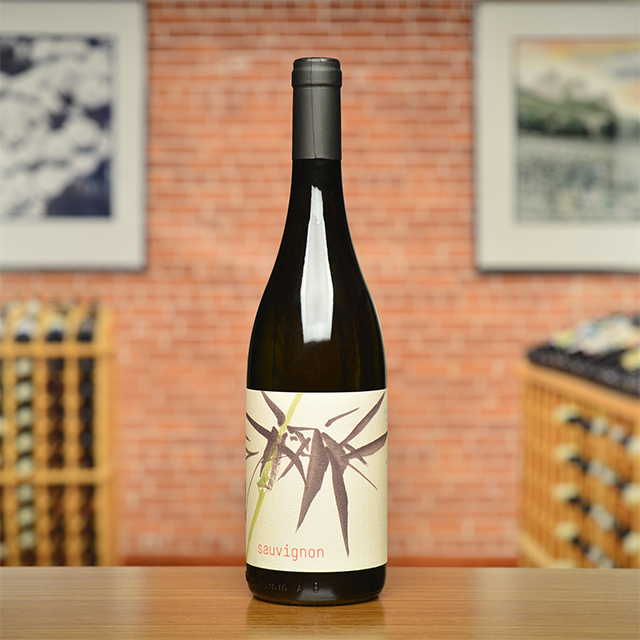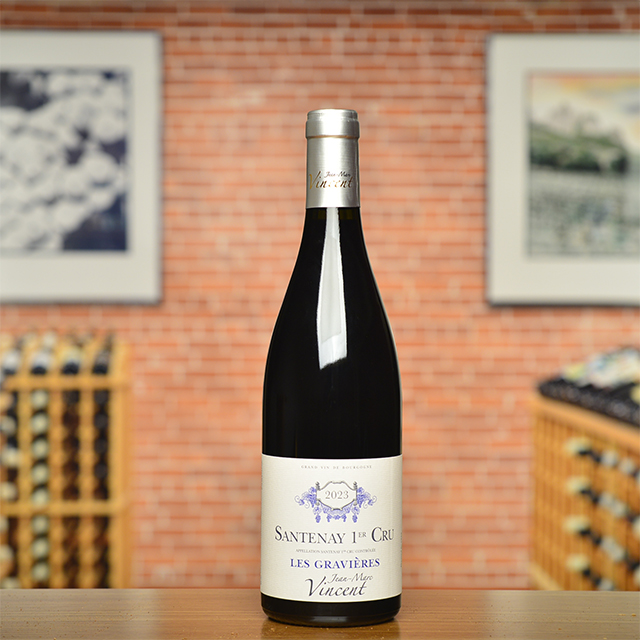Notify me
2017 Venezia Giulia Bianco “Morus Alba”
Vignai da Duline
Never have I opened a bottle of Duline and wondered what all the fuss is about. Each one delivers on the promise I’ve heard over and over, that these are some of the most captivating wines in all of Friuli. Morus Alba, a mouthwatering blend of Malvasia Istriana and Sauvignon Blanc, is the botanical name for the white mulberry trees that grow amid Duline’s vineyards, which you’ll also notice on their simple label. It may sound silly, but if mindfulness were a glass of wine you could sip, this would be it: center into the present, wind down, and focus on its appeal while all distractions disappear.
| Wine Type: | white |
| Vintage: | 2017 |
| Bottle Size: | 750mL |
| Blend: | 60% Malvasia Istriana, 40% Sauvignon |
| Appellation: | Delle Venezie |
| Country: | Italy |
| Region: | Friuli |
| Producer: | Vignai da Duline |
| Winemaker: | Federica Magrini, Lorenzo Mochiutti |
| Vineyard: | Planted in 1940 & 1979, .36 ha (Malvasia) 1.04 ha (Sauvignon |
| Soil: | Red soil (Malvasia) Flysch soil (Sauvignon) |
| Aging: | Aged for 11 months in 2.5 hl oak barrels |
| Farming: | Organic (practicing) |
| Alcohol: | 13.5% |
More from this Producer or Region

2009 Delle Venezie Malvasia “Malvatea”
Italy | Friuli
A sublime late harvest of Malvasia that is sumptuously delightful with a perfectly tart bite.

2019 Venezia Giulia Bianco “Morus Alba”
Italy | Friuli
This gives it a mesmerizing, Meursault-like tension between fuller body and almost creamy texture on one hand and high-acid, citrusy flavors on the other.

2019 Venezia Giulia Gialloditocai MAGNUM
Italy | Friuli
When I asked winemaker Lorenzo Mocchiutti why he only bottles this wine in magnum, he said it is because it is so delicious a regular-size bottle is just not enough.

2020 Friuli Colli Orientali Sauvignon “Ronco Pitotti”
Italy | Friuli
This bianco surprises from the very beginning to the last sip, with aromas of quince and salted butter and a long, lingering finish of toasted almond.

2016 Venezia Giulia Malvasia “Selezione”
Italy | Friuli
Aged eight years before release, the wine is textured, vibrant, and delightfully decadent.

2018 Refosco dal Peduncolo Rosso “Morus Nigra”
Italy | Friuli
Lovely now with a slight chill, their Refosco has a stimulating, stony backbone that ensures a slow evolution through the years.

2022 Venezia Giulia Friulano “La Duline”
Italy | Friuli
Sumptuous, yet bone dry with a stony finish. It’s just easy to love.

2020 Friuli Colli Orientali Refosco Peduncolo Rosso “Morus Nigra”
Italy | Friuli
Lovely now with a slight chill, their Refosco has a stimulating, stony backbone that ensures a slow evolution through the years.

2023 Chardonnay “Ronco Pitotti”
Italy | Friuli
First class depth and complexity on par with village level White Burgundy, but with a Friulian slant. Zingy adicity with citrus and apple notes.

2022 Venezia Giulia Bianco “Morus Alba”
Italy | Friuli
Richly textured and built to age, it is the ultimate match for a seafood risotto.
About The Producer
Vignai da Duline
About The Region
Friuli

Friuli may be forever tied to its bland, acidic Pinot Grigios, which at one point saturated the export market, but a deeper look reveals a captivating array of unique grape-growing sites, distinctive indigenous varieties, and passionate small growers keen on preserving a rich tradition of winemaking.
Here in Italy’s northeast corner, the region is shared between the Julian Alps in the north and plains leading to the Adriatic Sea in the south, bound by the Veneto to the west and Slovenia to the east. While it is one of the wettest regions of Italy—and all of Europe, for that matter—Friuli benefits from the push-and-pull of cool air currents from the mountains meeting warmer breezes from the Adriatic. A crescent-shaped slice of foothills, where both play a role, tends to produce the region’s finest wines.
Nothing is more emblematic to Friulian wine than a crisp, peachy Ribolla Gialla served with thinly sliced prosciutto San Daniele, a local specialty. And yet, this only begins to tell the story: high-acid, mineral-driven whites from a number of local varieties including Tocai Friulano, Pinot Grigio, and Malvasia range from light and crisp to powerful and age-worthy, complementing Adriatic shellfish, hearty mountain cheeses, and everything in between. Native reds like Schioppettino, Terrano, and Refosco all have something unique to say, while there has even been significant success with French varieties like Sauvignon, Chardonnay, and Merlot, all long established in the region.
Friuli’s diversity is its strength, and it keeps us coming back for more. In fact, Kermit imported one of the region’s first organic growers toward the start of his career; our more recent collaboration with producers like Vignai da Duline is a testament to the enormous potential when devoted artisans put their hearts into Friuli’s fascinating terroir.
More from Friuli or Italy
2018 Refosco dal Peduncolo Rosso “Morus Nigra”
Vignai da Duline Italy | Friuli
2022 Venezia Giulia Friulano “La Duline”
Vignai da Duline Italy | Friuli
2016 Venezia Giulia Malvasia “Selezione”
Kante Italy | Friuli
2020 Friuli Colli Orientali Sauvignon “Ronco Pitotti”
Vignai da Duline Italy | Friuli
2023 Chardonnay “Ronco Pitotti”
Vignai da Duline Italy | Friuli
2022 Venezia Giulia Bianco “Morus Alba”
Vignai da Duline Italy | Friuli
2019 Venezia Giulia Gialloditocai MAGNUM
Vignai da Duline Italy | Friuli
2021 Vino Rosato “Passatella” 1 Liter
Steiger-Kalena Italy | Molise
2009 Delle Venezie Malvasia “Malvatea”
Vignai da Duline Italy | Friuli
2021 Barolo “La Tartufaia”
Giulia Negri Italy | Piedmont
2020 Friuli Colli Orientali Refosco Peduncolo Rosso “Morus Nigra”
Vignai da Duline Italy | Friuli
2019 Venezia Giulia Bianco “Morus Alba”
Vignai da Duline Italy | Friuli
2018 Refosco dal Peduncolo Rosso “Morus Nigra”
Vignai da Duline Italy | Friuli
2022 Venezia Giulia Friulano “La Duline”
Vignai da Duline Italy | Friuli
2016 Venezia Giulia Malvasia “Selezione”
Kante Italy | Friuli
2020 Friuli Colli Orientali Sauvignon “Ronco Pitotti”
Vignai da Duline Italy | Friuli
2023 Chardonnay “Ronco Pitotti”
Vignai da Duline Italy | Friuli
2022 Venezia Giulia Bianco “Morus Alba”
Vignai da Duline Italy | Friuli
2019 Venezia Giulia Gialloditocai MAGNUM
Vignai da Duline Italy | Friuli
2021 Vino Rosato “Passatella” 1 Liter
Steiger-Kalena Italy | Molise
2009 Delle Venezie Malvasia “Malvatea”
Vignai da Duline Italy | Friuli
2021 Barolo “La Tartufaia”
Giulia Negri Italy | Piedmont
2020 Friuli Colli Orientali Refosco Peduncolo Rosso “Morus Nigra”
Vignai da Duline Italy | Friuli
2019 Venezia Giulia Bianco “Morus Alba”
Vignai da Duline Italy | Friuli
Kermit once said...

Kermit once said...
A good doctor prescribed the wine of Nuits-Saint-Georges to the Sun King, Louis XIV, when he suffered an unknown maladie. When the king’s health was restored the tasty remedy enjoyed a vogue at court. Lord, send me a doctor like that!
Inspiring Thirst, page 117
















